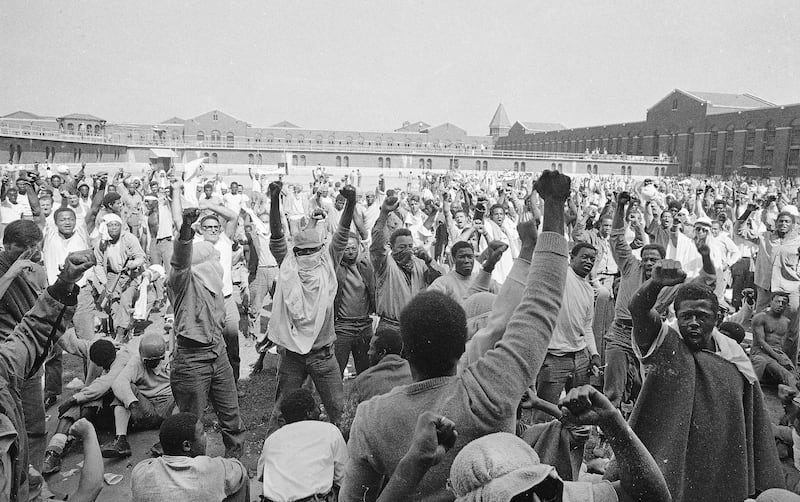A look back at local, national and world events through Deseret News archives.
On Sept. 9, 1971, prisoners seized control of the maximum-security Attica Correctional Facility near Buffalo, New York, taking 42 staff members hostage and demanding improvements to inmate treatment and living conditions.
The four-day revolt at the maximum-security facility ended when hundreds of state police officers stormed the complex in a hail of gunfire. Thirty-nine people were killed in the disastrous assault, including 29 prisoners and 10 prison guards and employees held hostage since the outset of the ordeal.
Prison riots are rare in the United States, but the 1971 riot was a glaring incident. Newspapers covered the daily events in full.
Per historical accounts, in the original riot, one prison guard was fatally beaten. Later that day, state police retook most of the prison, but 1,281 convicts occupied an exercise field called D Yard, where they held 39 prison guards and employees hostage for four days. After negotiations stalled, New York Gov. Nelson A. Rockefeller ordered the state police to regain control of the prison by force.
Early on Sept. 13, an ultimatum was read to the inmates, calling on them to surrender. They responded by putting knives against the hostages’ throats.
At 9:46 a.m., helicopters flew over the yard, dropping tear gas as state police and corrections officers stormed in with guns blazing. The police fired 3,000 rounds into the tear gas haze, killing 29 inmates and 10 of the hostages and wounding 89. Most were shot in the initial indiscriminate barrage of gunfire, but other prisoners were shot or killed after they surrendered.
In the aftermath of the bloody raid, authorities said that the inmates had killed the slain hostages by slitting their throats. One hostage was said to have been castrated. However, autopsies showed that these charges were false and that all 10 hostages had been shot to death by police. The attempted cover-up increased public condemnation of the raid and prompted a congressional investigation.
The Attica riot was the worst prison riot in U.S. history.
In 2000, New York settled a 26-year-old class-action lawsuit filed by the Attica inmates against prison and state officials. For their suffering during the raid and the weeks following, the former and current inmates accepted $8 million.
Many hear the word Attica and think Al Pacino chanting the reference in one of his well-known movies, “Dog Day Afternoon.” The scene in the 1975 movie is ad-libbed to create chaos outside the bank building as hostage taker Pacino is negotiating with police.

Here are stories from Deseret News archives about the Attica riot, and other U.S. prison riots:
“Deputy warden ruled at fault in ‘71 Attica riot’
“Riot taught a lesson of non-violence”
“Settlement plan worked out in 1971 Attica riots lawsuit”
“Frank Smith, central figure in 1971 Attica riots, dies”
“Inside Utah State Prison: Should it stay or should it go?”
“When it comes to moving Utah’s prison, learn from the past”
“Utah State Prison history: Favored penal sites always ‘way out of town’”
“Prison once stood where park now is”

This post was originally published on this site be sure to check out more of their content.








